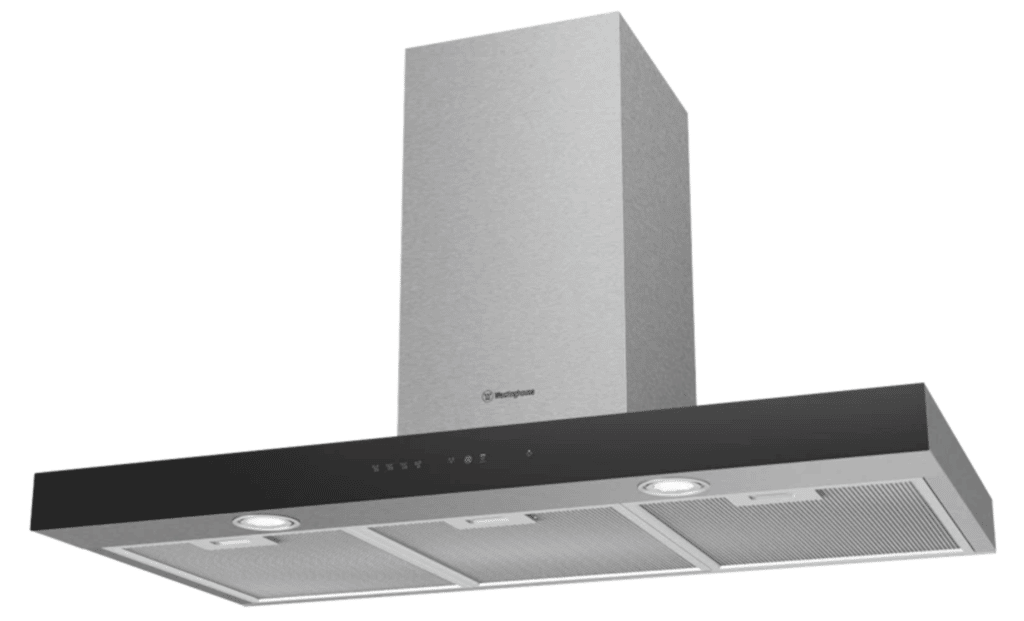If you live in a house or building chances are you have a range hood in your kitchen over you cooktop. A range hood contains a mechanical fan that when turned on helps to extract airborne grease, combustion products, fumes, smoke, heat, and steam from the air by evacuation of the air.
In most range hoods, a filtration system removes grease and other particles.
Although many vent hoods exhaust air to the outside, some recirculate the air to the kitchen. In a recirculating system, filters may be used to remove odours in addition to the grease.

Mechanical ventilation systems in kitchens
In high performance and passive houses with mechanical ventilation systems an extraction point is located in the kitchen area to remove some of the moisture and smells when cooking and other kitchen activities are taking place. Even though this will handle a large amount of standThis wont removal all the by products of cooking so a range hood is also required to work in unison with the mechanical ventilation system.
Make-up Air for Range Hoods in Airtight Homes
In an airtight or Passive House–standard home, a powerful ducted range hood can cause significant negative pressure when extracting air. Without a source of replacement (make-up) air, this can:
Reduce the performance of the range hood
Pull in air through unintended leaks, bypassing the ventilation system
Affect the operation of other exhaust appliances such as clothes dryers or wood heaters
To prevent these issues, some homes incorporate a dedicated make-up air supply that opens when the range hood is in use. This ensures balanced airflow and maintains the integrity of the ventilation system.
Balancing with MVHR Systems
If your home uses a Mechanical Ventilation with Heat Recovery (MVHR) system, it’s important to note that these units are not designed to cope with large, short-term extraction loads from range hoods. In most cases:
The MVHR continues to provide background ventilation
The range hood operates independently, exhausting directly outside
Backdraft dampers or automated dampers prevent air from re-entering the home through the duct when the hood is off
Balancing with MVHR Systems
In some high-performance homes, a recirculating range hood with a high-quality charcoal filter may be used to avoid large penetrations in the building envelope. This can be suitable when:
Cooking is light and infrequent
Strong-smelling or high-grease cooking is avoided
The MVHR system provides adequate extraction in the kitchen zone
However, recent studies have shown the a reticulating range hood may not remove all the particulate matter created when cooking.
Best Practice for Airtight Homes
For the best results in an airtight home:
Use a ducted range hood vented outside, with a sealed damper when not in use.
Integrate make-up air to prevent negative pressure.
Coordinate with your ventilation designer so the system works in harmony with the MVHR.
Select a hood that is quiet, efficient, and easy to clean.
By planning early in the design process, you can enjoy the benefits of both a high-performance building envelope and effective kitchen ventilation without compromising comfort or air quality.
Need help designing ventilation for your airtight home?
At HiPer Haus, we specialise in ventilation solutions that work seamlessly in high-performance and Passive House-standard buildings. Whether you’re planning a new build or upgrading your kitchen extraction, we can help you choose the right system and integrate it properly for comfort, efficiency, and healthy air.